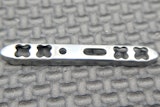Even in the fast-paced blur of today’s manufacturing landscape, one thing is clear: no one can innovate alone. The traditional days of developing products, building them, and bringing them to market are over. Digital transformation is here for every company, and the value is well proven.
PwC has pointed out, for instance, that, “Manufacturers expect digital investments to lower costs, with about four of ten expecting cost savings from 11 percent to 30 percent over the next five years.” And you do not have to be a native digital company to stake a competitive claim in the hyper-connected economy. Long-standing manufacturers are finding compelling ways to push forward their customer-centric digital transformation. We hear strong case studies every day. Take RCL Foods, for example. Facing an aging sugar mill, this South African food and beverage producer digitized its mill, leading to an increase in throughput of up to 20 percent.
Increasing productivity is not the only benefit for manufacturers. Digitization can facilitate a better sustainability and energy efficiency profile, too, as the leading appliance manufacturer Whirlpool has shown through its effective zero-waste manufacturing efforts.
Original Equipment Manufacturers (OEMs) are jumping on board the digital train, too. Tailored, purpose-built machines typically require large capital output, and unexpected maintenance often relies on highly specialized engineers. Digital is changing the game for many machine builders, presenting opportunities across both the CapEx and OpEx life cycle.
What is the difference? Embedded with intelligent, connected sensors, manufacturing machines gain the ability to “talk” to each other and to operators in real-time, creating a huge turning point for OEMs that have to manage, maintain, and service vast fleets of machines spread out across the globe. The Indonesian OEM Berto Coffee Roaster, for example, has built a fully digitized and automated coffee roaster that improves production output, quality, and consistency. The true payoff here is Berto’s ability to lower machine maintenance costs (by up to 20 percent) and time (by up to 50 percent) via single-pane visibility to its machines’ health, performance, and efficiency.
Proactive, predictive maintenance has made the days of reactive, unplanned fixes fall by the wayside.
A Common Thread: Competitive Collaboration
How are traditional players such as RCL Foods, Whirlpool, and Berto (and many other manufacturers) taking the digital leap and, more important, landing successfully when digital most likely is not be part of their core DNA?
A digital ecosystem is the answer. Networking and collaborating within an open ecosystem is the way for traditional companies to bring their core business up to speed in the digital economy. Taking advantage of digital ecosystems makes the convergence of the old and the new very possible and, indeed, profitable, for many manufacturers. McKinsey’s Martin Hirt says, for example, that, “By 2025, digital ecosystems could account for about 30 percent of global corporate revenue.”
Let’s look again at Berto. Every morning, most of us are thankful that there are manufacturers who bring coffee to life. Behind the scenes, Berto specializes in building coffee roasting machines—not data, not digital, not IoT, not the cloud, not analytics, etc. So how is Berto reaping the benefits of digitization so quickly? Simply put, it looked beyond itself to supplement its core expertise, leveraging cloud and IoT enabled technology to co-innovate its smart, connected machines
Other OEMs are following the same path by breaking down traditional boundaries to co-innovate digital solutions following a collaborative ideation-to-market process. For example, Bühler, a global market leader in the supply of flour production plants, pasta and chocolate, is leveraging augmented reality technology to enable its machine operators to visualize production data.
As these examples illustrate, no single company can transform by itself for long-term success in the digital economy. Embracing a digital ecosystem approach is essential. This new way of doing business allows companies to solve specific business problems in a condensed timeframe with relevant outcomes, versus innovating just for technology’s sake. This shift in mindset (that is, placing the customer challenge or business need at the center of digital transformation) is especially critical since each company scenario can vary widely company to company, market to market. There’s no need to answer each business case from scratch if there are shared lessons and proofs of concepts to be had within a digital ecosystem.
A digital ecosystem allows industrial companies to solve these problems quickly and with agility, as the ecosystem network can work to create, collaborate, and scale solutions to questions such as:
- How can I improve quality and standardization in automation applications?
- Where can I find information system reference designs for an energy-efficiency manufacturing facility?
- How can I find solutions to enable secure and remote equipment access to minimize downtime?
- How can I create solutions to empower industrial operators to make faster, more accurate decisions?
- How can I build new digital business models to grow my business?
- How can I find AI experts and data scientists to help with predictive maintenance projects?
- How can I improve the cybersecurity of my plant and digitize my supply chain?
The Power to Digitize
Digitization (i.e., creating connected processes) is just one side of the coin. Going digital (i.e., creating digital customer experiences) is the other. There is no point in delivering a digital product if the user experience is poor.
A digital ecosystem can support companies digitizing and going digital, and at the same time, give birth to new digital business models (e.g., uptime as a service, pay-by-use service) that traditional companies could not have visualized just a few brief years ago.
It is true: digital disruption won’t wait for anyone. Fortunately, a thriving digital ecosystem is the path to accelerate any traditional company’s digital journey. An open ecosystem welcomes manufacturers from all segments to pick up the pace of their transformation, in turn, staking their own competitive claim in today’s digital economy.
Cyril Perducat is EVP of IoT & Digital Offers at Schneider Electric.























